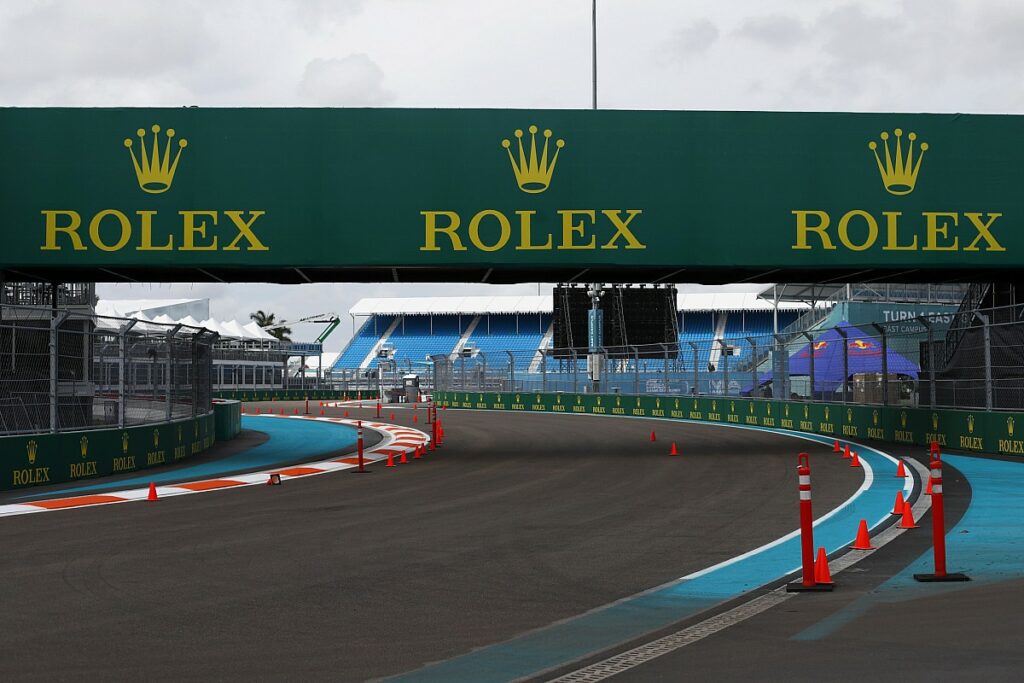The Miami International Autodrome is located on the site of Hard Rock Stadium as a semi-permanent racetrack, allowing the complex to host its regular sporting events once Grand Prix weekend is over. A number of proposals for a race in Miami have been met with opposition (including hosting a downtown race), and the track’s original layout at Hard Rock Stadium has also been the subject of criticism due to the use of 199th Street, which passes through the south.
The organizers have therefore taken the decision not to include this route due to concerns raised by local residents about the disruption that a Grand Prix would cause. Instead of taking this street, the track layout has been tightened at the current turn 8, after a series of esses between turns 4 and 7. The 8 then offers a 1.4 acceleration phase km to turn 11, which passes through the middle of the courts of the Miami Open, a tennis tournament held in early April.
« We had to change a lot of things when 199th Street was no longer an option »says Clive Bowen, the founder of Apex Circuit Design, who designed the layout. « But that introduced the opportunity for us to go a little crazy. So instead of going through the west parking lot and 199th Street, we turn a little tighter and go around the gondola station. Then we cross straight to the Miami Open tennis complex, which was a much-criticized idea, as you can imagine, so we had to find a way to lay out that complex, lay the layers, get the drainage to work , the connections between the courts, and to build the track before the Tennis Open itself started. Once the tournament was over, we had to very quickly remove their equipment and convert the area into a circuit. »

The start of the return straight from turn 16.
The track design pays homage to a number of circuits already on the F1 calendar. Bowen likens Turn 8 to Beausset at Paul Ricard, and feels the high-speed portion to Turn 11 is similar to the final Baku sector. Coming out of turn 11, the stadium is a nod to Mexico City’s Foro Sol. The tight sequence that follows, from the chicane to turn 16, is intended to punish the mistakes of drivers who take off, like the « Wall of Champions » in Montreal.
One of the recent changes to the circuit was the removal of curbs at Turns 6 and 7, following Mick Schumacher’s high-speed crash in Jeddah during qualifying. The Haas driver had lost control of his single-seater after going too wide in this fast sequence. “Instead we installed a flat curb which is painted to look like a vibrator so that if someone takes off we don’t see a similar accident”, says Bowen. The architect is optimistic and thinks that the sequence between turns 4 and 7 will allow the drivers to stay close to each other thanks to the new generation of single-seaters. The Miami circuit is also the first to have been designed specifically for these 2022 single-seaters.
« This sequence is really very demanding for the car »Bowen analysis. “For the previous generation of F1, this would have meant spacing between cars. But thanks to the regulations introduced, we have a lot of ground effect and reduced turbulence, which means the cars can drive behind each other. We’ve worked hard with Formula 1 and its technical staff to understand the dynamics of these cars, and we’ve designed the track around the expected ground effect, so we’re hoping the cars will stay close together until at the exit of turn 8, where they can then fight until turn 11. »
![]()

